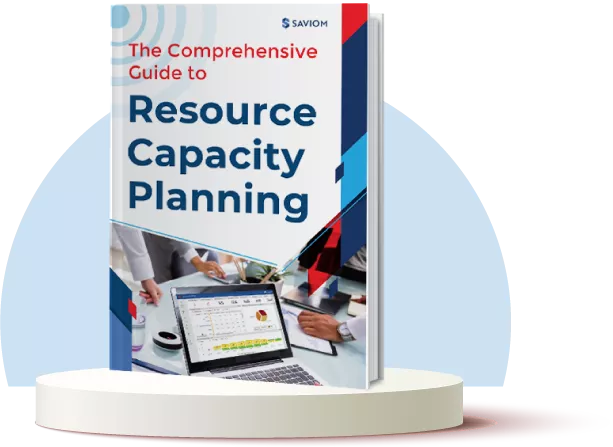If you want to do a few small things right, do them yourself. If you want to do great things and make a big impact, learn to delegate – John C Maxwell, American author, speaker
Rightly said by Mr. John C Maxwell, delegation is the key to successful leadership.
When you delegate a task to a team member, you hold them responsible and accountable for the same. It instills a sense of ownership and motivates them to work more diligently with a greater commitment minimizing any room for errors. As a result, it increases efficiency and reduces your workload, allowing more time to do strategic work. Besides, you are also helping your subordinates and team members develop professionally.
Moreover, delegation ensures that each employee performs their duties according to their role and the projects on time. However, the art of delegation isn’t always easy. To ensure success, managers should develop a strategy, as this lays the foundation for effective management.
In this article, you will understand the significance of delegation and some proven strategies to create an effective plan.
But before that, let’s start with the basics.
What is delegation?
Delegation refers to transferring responsibilities to someone who is either reporting or subordinate to you within the organization. It is a process to elevate certain employees to the next level of leadership as a part of succession planning.
Suppose you are a content team manager, and you need to create a blog post about a specific product. This encapsulates multiple steps such as curating the content, editing and reviewing it, creating visuals, and finally getting it live on the website. So naturally, you cannot accomplish all of these, or it will delay the whole process.
So, after creating a project plan, you can list out and delegate tasks to competent employees based on their availability. Once the team members are done, you will provide your final approval and publish it. This process of distributing workload is known as delegation.
Now that we know what delegation is, let us understand its significance.
Read More: What is Resource Allocation? A Comprehensive Guide for Project Success
The significance of delegating effectively
A study by Harvard Business Review determined that delegating responsibilities can actually increase organizations’ overall efficiency.
Here are some noteworthy benefits of delegating tasks amongst employees.
Ascertains faster completion of work within deadlines
Whenever a manager delegates a task to an employee, they ensure that the appropriate resources are assigned to the task according to their role. This increases their productivity, which will expedite the delivery within the set deadline. Thus, competent allocation results in faster completion of work.
Allows managers to focus on strategic activities
Delegation provides managers with the time and ability to focus on higher-level and strategic tasks and achieve the organization’s long-term goals. This gives them the leeway to look at bigger pictures and not get consumed in the regular nitty-gritty of work.
Enhances team accountability
As stated earlier, you hold a resource accountable to complete it with standard quality expectations by delegating a task. Therefore, when all team members are aware of their responsibilities and how it affects the project, they will be motivated to achieve the best results. Thus, they undertake the task with full responsibility.
Strengthens manager-employee relationship
Whenever you delegate work to your subordinates, you trust them with the task. Thus, employees feel entrusted and gain a sense of purpose, knowing that their leaders believe in their abilities and provide them with opportunities to grow. This strengthens the employee-employer relationship.
Ensures manageable distribution of workload
A manager needs to assess the availability of resources before assigning work to employees. By doing so, the work is equally distributed among the employees, so no one is over or under-allocated.
Now that we know about the significance of delegating tasks let’s look at some of the crucial elements.
Elements of delegation
There are three core elements that every manager needs to consider before assigning work to their employees.
They are as follows –
Authority – The right to instruct employees to perform specific tasks within the scope of their responsibilities by a manager is called authority. As a leader, you can delegate some of your formal authority to another subordinate when you assign a task to them. Furthermore, while performing the authoritative role, you must clearly communicate the task and expectations to your respective team members.
Responsibility – Needless to explain, the employee who has been given the task has the ‘Responsibility’ to accomplish it within deadline and quality. If, by any chance, they fail to complete it within the schedule, they should be in a position to explain the reason behind this. Additionally, project success rates increase when employees take ownership of their respective tasks.
Accountability – Accountability describes taking ownership and responsibility for your actions that led to the attainment or failure of an intended goal. For example, if ‘X’ gets a task with sufficient authority and the task is then delegated to ‘Y’, and ‘Y’ is given the charge to ensure that the task is executed correctly, accountability is still left with ‘X’. Thus, top-level management has the most accountability. In other words, even if managers delegate, the authority or the onus lies in the hands of the managers.
RACI Chart – Managers can use a specific tool like a RACI chart to understand the above elements. RACI, or responsibility assignment matrix, is a diagram used in project management to represent the roles and responsibilities of resources. According to this chart, people involved in a project activity are either Responsible, Accountable, Consulted, or Informed regarding their corresponding work.
The focus will be on your team’s ability to act responsibly within a framework you’ve developed instead of allowing personal judgment and politics to dictate your process.
After understanding the various elements, let’s know about the various strategies that you can use to delegate effectively.
Read More: What is Workforce Planning, and How to Master it for Business Efficiency?
5 effective strategies to delegate responsibility among employees.
According to Gallup, CEOs who excel in delegating generate 33 percent higher revenue
Here are 5 effective strategies to delegate responsibility among employees-
Formulate an action plan before delegating the task.
First and foremost, managers have to formulate a definite project plan, enlist the tasks roles required, and then start delegating. It’s the most critical step of the delegation since it helps define the goal and objectives of the project. Once you have outlined an action plan, you can form a team that explains the deliverables and objectives to the members. After that, you can start allocating the tasks that correspond with their roles.
Describe the level of authority.
Managers should ensure that their subordinates have enough independence to accomplish their tasks. One can achieve this by delegating authority and power linked directly to their job. For example, every member of a marketing team has varying levels of authority in an organization. Referring to the content marketing example, a senior content writer is responsible for reviewing the blogs written by junior writers before sending them to managers for final approval. Similarly, regardless of the industry and the nature of the project, managers should dictate the authority to every task owner and the corresponding team.
Get enterprise-wide visibility of your resources.
To ensure competent allocation and avoid scheduling over or under-skilled resources, managers should have complete visibility of their talent pool. Using enterprise-level resource management software, they can get a bird’s eye view of the workforce’s skills, location, availability, and other attributes. Moreover, this information is up-to-date and available in real-time, eliminating scheduling errors.
Read More: What is Resource Management? A Comprehensive Guide for All
Delegate the task to the competent resources.
It’s imperative to ascertain that the right person with the right skillset is doing the right job. Or else it may lower their productivity and lead to disengagement. Thus, using the advanced filters of the tool, managers can find the best-fit resources, understand their availability and utilization, and delegate accordingly. If the required competencies are absent, they can conduct training, upskilling, or hire new resources. As a result, the employees will work efficiently, completing the task within the set timeframe.
Monitor performance regularly and offer constructive feedback.
As a leader, you are responsible for ensuring that the project’s end goal meets the client’s expectations, even after you delegate tasks. To achieve this, you must regularly check whether the resources are completing the work within the stipulated time. Furthermore, it helps to take appropriate remedial actions proactively in case of any variance. The best way to achieve this is to deploy the resource management tool and analyze forecast vs. actual reports procured in real-time. One must also offer constructive feedback if there is any gap in performance and bridge the gaps.
Read More: 7 Proven Ways to Give Constructive Feedback to Your Employees
Conclusion
The methods mentioned above will help you effectively delegate and distribute responsibility amongst your workforce. For an organization to function smoothly, managers must determine which tasks to delegate and which to keep on their to-do list to ascertain organizational efficiency. Furthermore, it strengthens relationships with employees, boosts productivity, and helps establish a positive work environment.
“If you really want to grow as an entrepreneur, you’ve got to learn to delegate.” Richard Branson, British entrepreneur.”
The Glossary
Read More: Glossary of Resource Workforce Planning, Scheduling and Management
The SAVIOM Solution
SAVIOM is the market leader in offering the most powerful and configurable solutions for managing enterprise resources efficiently and effectively. Having more than 20 years of experience, this Australian-based MNC has a global presence in over 50 countries. It is also popular with more than 100 customers and helps them achieve their business goals. SAVIOM also has products for project portfolio management, professional service automation, and workforce planning software which can be easily customized as per business requirements.











